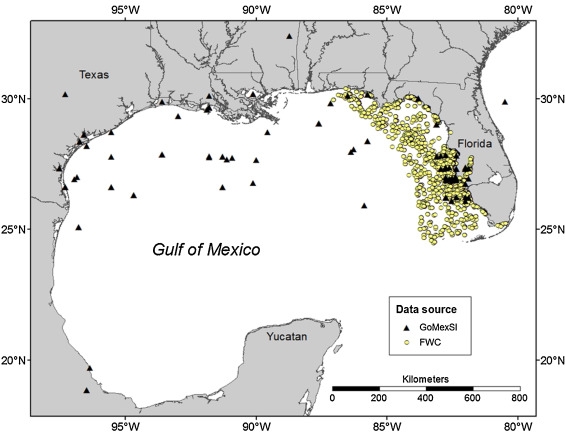
Progression of a Gulf of Mexico food web supporting Atlantis ecosystem model development
This article develops a marine food web matrix for the Gulf of Mexico (GOM) based on local stomach sampling and online diet information. Working at the level of functional groups, we fit diet information to a statistical model based on the Dirichlet distribution. This allows us to quantify likely contributions of prey to predators’ diets. Error ranges on these values reflect diet variability and data quality, and help in identifying functional groups that would benefit from additional sampling. We perform hierarchical cluster analysis to determine functional groups that have similar prey requirements, then produce a food web diagram representing the interactions between predators and prey. A meta-analysis using principle coordinate analysis allows us to compare this study’s diet matrix with ten other published GOM food webs and determine where variation in food web structure exists. We also compare our new food web to the diet matrix used by the Ainsworth et al. (2015) Atlantis ecosystem model, a strategic tool developed to assess ecosystem dynamics in the GOM. A hindcast from 1980 to 2010 using Atlantis shows an improved fit to observational data and reduced error in biomass projections using the revised diet information.



